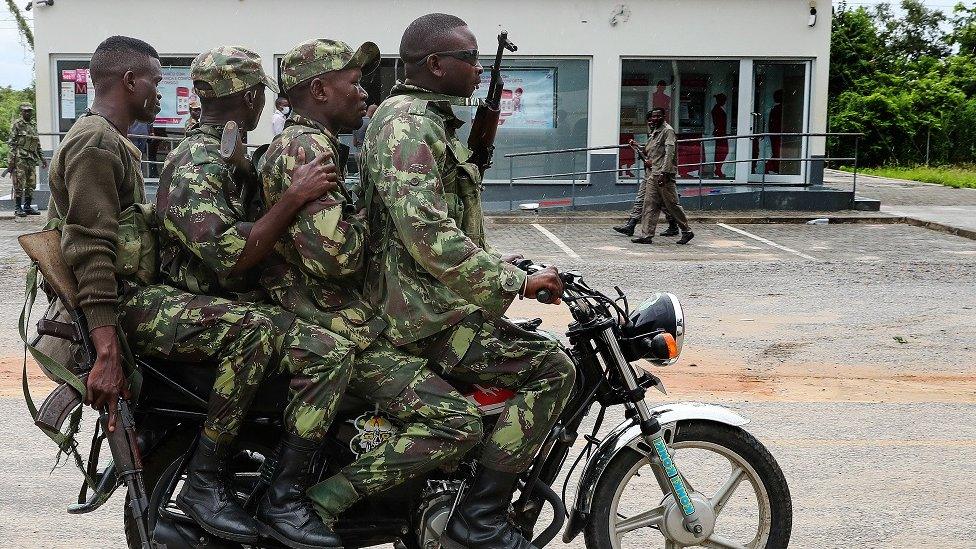Allied Democratic Forces: The Ugandan rebels working with IS in DR Congo
- Published
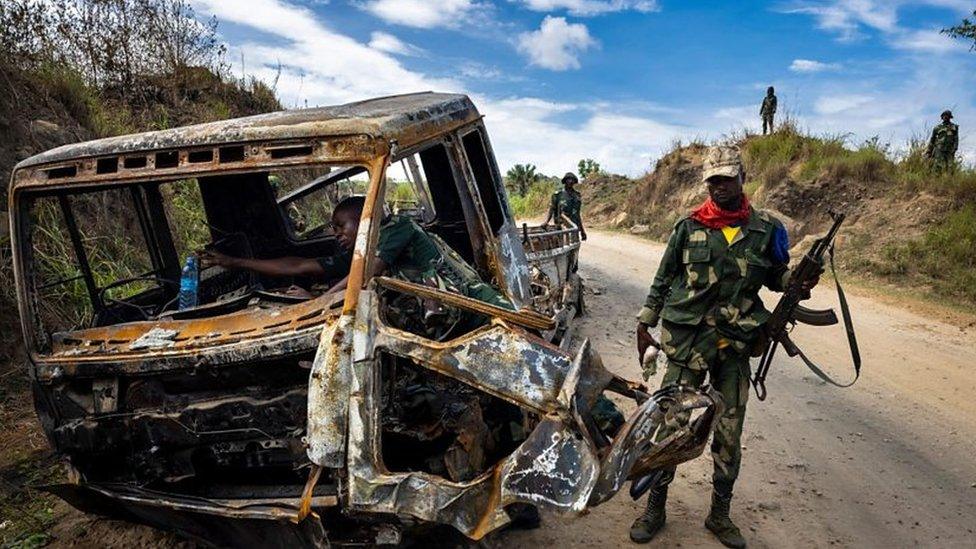
ADF/IS attacks around Beni have become more frequent since March 2020
The eastern region of the Democratic Republic of Congo has long been a cradle of rebel activity, often the spill-over of conflict in neighbouring Rwanda, Burundi and Uganda.
Among the most notorious groups now operating there is Uganda's Allied Democratic Forces (ADF).
The Islamist militant outfit was formed in the 1990s and primarily concerned itself with domestic grievances within Uganda.
But after re-emerging in DR Congo, its activity has taken on a more global jihadist dimension, with attacks increasingly being claimed in the name of the Islamic State (IS) group.
How did the ADF start?
The ADF was created in eastern Uganda and took up arms against long-serving President, Yoweri Museveni, alleging government persecution of Muslims.

IS video of militants in the aftermath of an attack on a village in Ituri province
After its defeat by the Ugandan army in 2001, it relocated to North Kivu province in the DR Congo.
Following a period of low-level activity, the ADF re-emerged in 2014 with a series of attacks on Congolese civilians.
Musa Seka Baluku became leader in 2015 following the arrest of his predecessor Jamil Mukulu.
Baluku reportedly first pledged allegiance to IS in 2016.
But it was not until April 2019 that IS first acknowledged its activity in the area, when it claimed an attack on army positions near the border with Uganda.
This statement marked the announcement of IS's "Central Africa Province" (Iscap), which would later include Mozambique.
While there are indications that IS has co-opted the ADF, IS has never publicly mentioned it by name in its propaganda.
In September 2020, Baluku claimed that the ADF had "ceased to exist".
"At present, we are a province, the Central African Province, which is one of many provinces that make up the Islamic State," he said.
Local media still attribute attacks to the ADF.
What is the situation in DR Congo?
According to the UN's refugee agency, the UNHCR, the ADF has killed about 200 civilians and displaced nearly 40,000 others in Beni since January 2021. The rebel group also targets government and UN troops.
Since the emergence of IS in DR Congo, the frequency of attacks has increased.
Iscap's attacks take place in ADF territory, centring on North Kivu's Beni territory, with occasional forays into neighbouring Ituri Province.
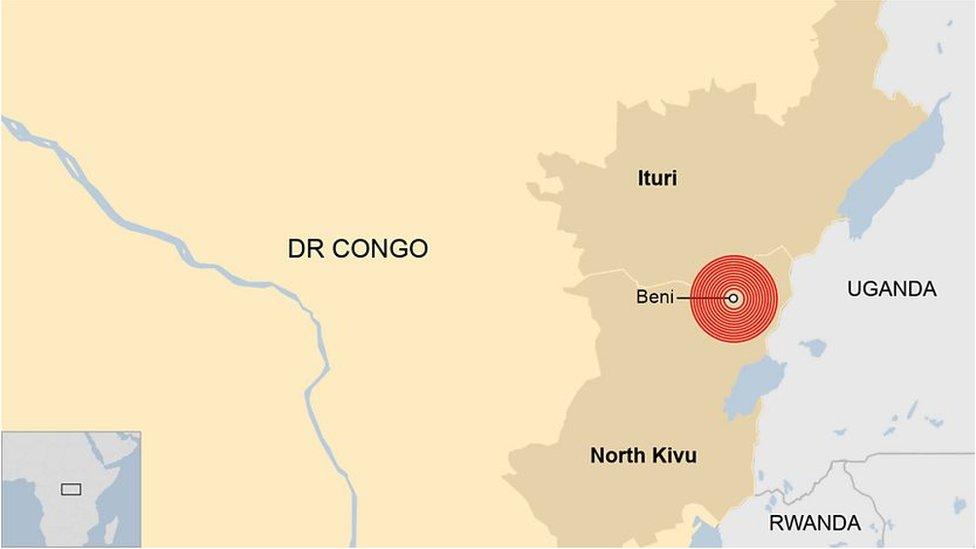
ADF activity mainly centres on Beni in Nord Kivu
The vast majority of these are on military targets, but the deadliest attacks are on Christian civilians.
Iscap's most significant attack so far appears to have been the October 2020 jail break in Beni that led to the escape of over 1,000 prisoners.
Fears of religious conflict
The conflict in eastern DR Congo has often touched off ethnic tensions, but the involvement of IS risks adding a sectarian dynamic.
DR Congo is predominantly Roman Catholic, and the church is a key player in the country. Muslims comprise about 10% of the population.
The Muslim community in Beni has become increasingly vocal against the rebel group, but this comes at a cost.
In May, two prominent clerics known to be critical of the ADF were shot dead in Beni.
The rebel group has also been linked to attacks against Catholics. In October 2012, it abducted three Catholic priests from a convent in the Mbau locality. Their whereabouts remain unknown.
In its propaganda, IS has frequently singled out Christians and taunted the DR Congo government over its "failure" to protect them from its attacks.
Such provocation is characteristic of IS, which often seeks to exacerbate local tensions to bolster its credentials as a defender of ordinary Muslims against "oppression".
IS propaganda
The ADF does not appear to run its own media outlets or to independently claim responsibility for attacks.
But IS has a sophisticated and centralised online media operation at its disposal, bolstered by a host of supportive outlets operating on various messaging platforms.
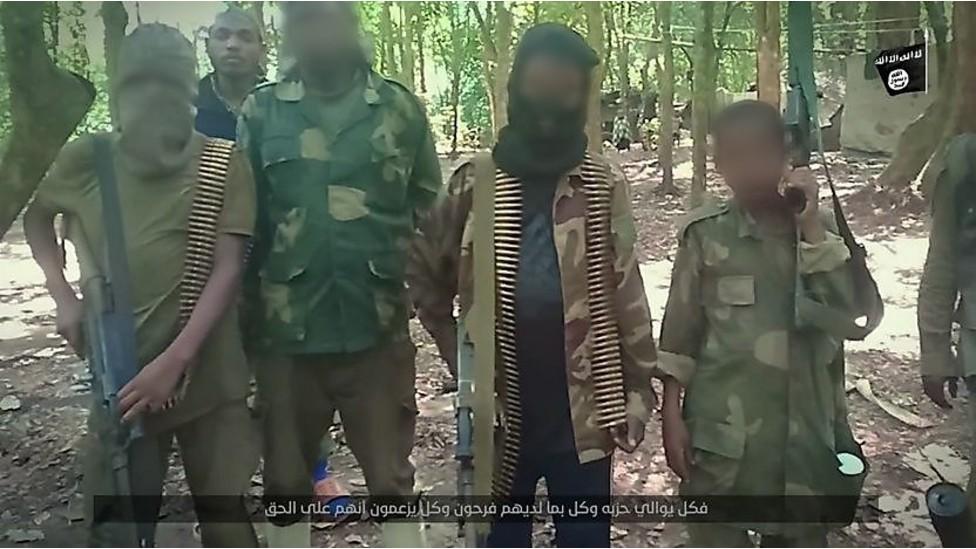
Iscap propaganda has included images of children
The bulk of Iscap propaganda consists of written claims of attacks, and photos of their aftermath.
In March, as a show of force, Iscap released images purporting to show its militants roaming the streets of a village in Ituri province following an attack on the army. But such images are rare and suggest that IS has yet to become a significant force in DR Congo.
In October 2020, IS's flagship newspaper al-Naba released a special infographic flaunting Iscap operations over a period of 12 months, highlighting attacks in both DR Congo and Mozambique.
Regional jihadist expansion
Rebel violence in eastern DR Congo has largely been sustained by a lack of strong government institutions and mistrust in military intervention.
These are ideal conditions in which IS can expand, as evidenced by its surge across Iraq and Syria in 2014, and more recently in West Africa, where it has spread beyond north-east Nigeria into the Sahel region.
Similarly, IS expansion is often driven by alliances or the co-opting of established local groups with a shared ideology, as appears to have happened with the ADF.
Iscap is likely to exploit the increased violence to expand activity in neighbouring countries.
Indeed this is already in evidence, with increased attacks in Mozambique and the first Iscap-claimed attack in Tanzania in October last year, which reportedly left 20 soldiers dead.
This expansion, along with the one witnessed in West Africa, is part of a general tilt towards Africa following IS's recent setbacks in its traditional Middle Eastern heartlands.
- Published3 December 2020
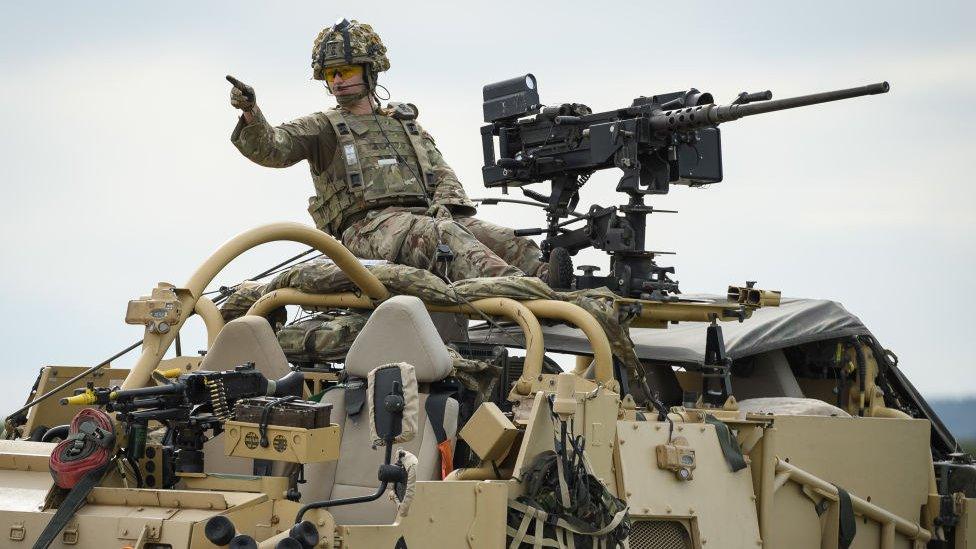
- Published17 April 2021
